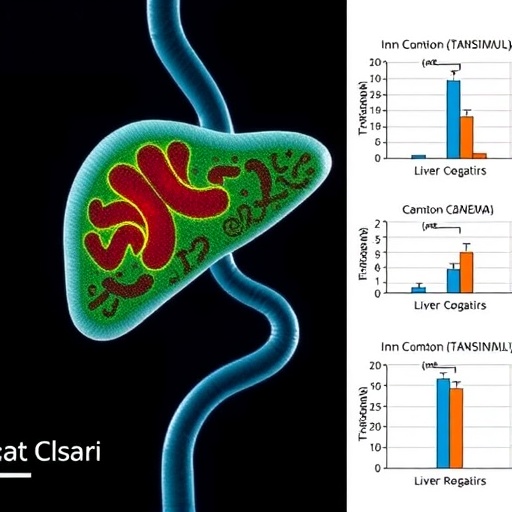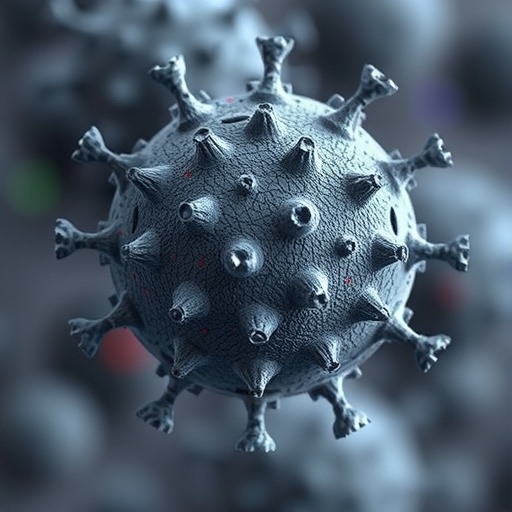In a groundbreaking study poised to reshape therapeutic strategies against hepatocellular carcinoma (HCC), researchers have elucidated the profound effects of Tanshinone IIA on the growth dynamics of p53-mutant Huh-7 cancer cells exposed to hyperthermic stress. This molecular insight not only reveals the complex survival mechanisms of liver cancer cells under thermal duress but also uncovers a novel target pathway involving ALDH7A1, positioning Tanshinone IIA as a promising candidate for targeted cancer therapy.
Hepatocellular carcinoma remains one of the most lethal malignancies worldwide, often marked by resistance to conventional therapies, especially in cases harboring mutations in the tumor suppressor gene p53. The p53 mutation typically confers aggressive growth and poor prognosis, making targeted interventions imperative. The recent findings presented by Li and colleagues bring forth a compelling narrative on how heat-induced growth stimulation in p53-mutant Huh-7 cells can be curtailed through biochemical modulation by Tanshinone IIA.
Tanshinone IIA, a bioactive compound isolated from the traditional medicinal herb Salvia miltiorrhiza, has been recognized for its multifarious pharmacological properties, including anti-inflammatory and antioxidant functions. However, its role in modulating cancer cell metabolism—particularly under stress conditions such as heat—had remained largely enigmatic until now. This study meticulously explores the interplay between hyperthermia and metabolic reprogramming in HCC cells, revealing how Tanshinone IIA interferes with crucial survival pathways.
The crux of the research demonstrates that heat exposure induces an atypical proliferative response in p53-mutant Huh-7 cells, a phenomenon that complicates therapy-induced hyperthermia approaches. Intriguingly, Tanshinone IIA administration was shown to impede this heat-induced growth enhancement effectively. Mechanistically, this anti-proliferative effect is attributed to the modulation of osmotic homeostasis and glycolytic flux, both pivotal in maintaining cellular viability under thermal stress.
Delving deeper, the study identifies ALDH7A1, an enzyme traditionally known for its role in aldehyde detoxification, as a critical molecular target of Tanshinone IIA. ALDH7A1 appears to orchestrate the metabolic adaptation of HCC cells to heat by regulating osmolyte balance and glucose metabolism. Targeting ALDH7A1 disrupts this adaptation, thereby sensitizing cancer cells to heat and curbing their pathological growth.
The researchers employed a battery of sophisticated molecular and cellular assays to validate these findings. Gene expression analyses revealed that Tanshinone IIA treatment downregulated key glycolytic enzymes and osmotic regulators in a dose-dependent manner. Functional assays further corroborated that inhibiting ALDH7A1 enzymatic activity mimicked the effects of Tanshinone IIA, underscoring the enzyme’s indispensability in the heat-induced growth response.
An exciting aspect of this investigation is the dual modulatory role of Tanshinone IIA—simultaneously impacting metabolic homeostasis and stress adaptation. By disrupting glycolysis, the primary energy-generating pathway in cancer cells, and perturbing osmotic balance, the compound exerts multifaceted stress that cumulatively undermines cancer cell survival. This multi-targeted effect not only enhances therapeutic efficacy but also reduces the likelihood of resistance development.
From a clinical translational perspective, this study opens new avenues for combining Tanshinone IIA with hyperthermia-based treatments. Conventional hyperthermic therapy seeks to exploit cancer cells’ vulnerability to elevated temperatures; however, the adaptive metabolic rewiring often diminishes its effectiveness. Administering Tanshinone IIA could potentiate hyperthermia by subverting these adaptive responses, offering a synergistic approach to HCC management.
Beyond its immediate implications in HCC, the identification of ALDH7A1 as a metabolic vulnerability holds transformative potential across various cancers where similar metabolic plasticity underlies resistance. The enzyme’s involvement in both detoxification and metabolic regulation links it uniquely to tumor survival under hostile conditions, making it a valuable target for future drug development.
Furthermore, this study underscores the importance of integrating metabolic and genetic insights to design precision therapies. The specificity of Tanshinone IIA’s action against p53-mutant cells signifies that mutational context profoundly influences therapeutic outcomes, advocating for molecularly tailored interventions in oncology.
The elucidation of osmotic homeostasis as a vital component of cancer cell survival under heat stress introduces an often-overlooked facet of tumor biology. Osmolytes, by regulating cell volume and ionic balance, contribute critically to the stress adaptation machinery. Therapeutic strategies aimed at disrupting this balance, as demonstrated by Tanshinone IIA’s effect, represent a novel frontier in cancer treatment.
Another notable highlight of the research is the comprehensive methodological framework encompassing molecular biology, biochemistry, and cell physiology, ensuring robust and reproducible conclusions. The convergence of these disciplines provides a holistic view of the therapeutic mechanism, enhancing confidence in the translational potential of the findings.
Intriguingly, Tanshinone IIA’s capacity to influence glycolysis intersects with the well-documented Warburg effect in cancer cells, where glycolytic metabolism persists even in oxygen-rich environments. By attenuating glycolytic enzyme expression, the compound acts as a metabolic gatekeeper, restricting the energetic currency necessary for unchecked proliferation.
This study not only advances our understanding of hepatocellular carcinoma biology but also enriches the pharmacopeia of natural compounds with high therapeutic potential. The rediscovery and repurposing of traditional medicines like Tanshinone IIA exemplify the fruitful amalgamation of ethnopharmacology and modern molecular medicine.
Looking forward, further investigations will need to validate these in vitro findings in vivo, exploring pharmacokinetics, optimal dosing, and potential side effects of Tanshinone IIA in combination with hyperthermic therapy. Moreover, elucidating the broader systemic effects and immune interactions will be critical before clinical translation.
In sum, the research presented by Li et al. marks a significant stride in cancer therapeutics, unveiling Tanshinone IIA as a potent modulator of heat-induced growth in p53-mutant HCC through a sophisticated mechanism involving ALDH7A1-mediated metabolic and osmotic regulation. This work paves the way for innovative combinatorial treatments, promising improved outcomes for patients battling hepatocellular carcinoma.
Subject of Research: Hepatocellular carcinoma (HCC), specifically targeting p53-mutant Huh-7 liver cancer cells under heat-induced growth conditions and the metabolic regulation via ALDH7A1.
Article Title: Tanshinone IIA inhibits heat-induced growth of p53-mutant Huh-7 hepatocellular carcinoma by modulating osmotic homeostasis and glycolysis through targeting ALDH7A1.
Article References:
Li, H., Ju, S., Wang, J. et al. Tanshinone IIA inhibits heat-induced growth of p53-mutant Huh-7 hepatocellular carcinoma by modulating osmotic homeostasis and glycolysis through targeting ALDH7A1. Cell Death Discov. 11, 493 (2025). https://doi.org/10.1038/s41420-025-02795-0
Image Credits: AI Generated
DOI: https://doi.org/10.1038/s41420-025-02795-0
Tags: ALDH7A1 pathwayanti-inflammatory properties of Tanshinone IIAcancer resistance mechanismsheat-driven cancer growthhepatocellular carcinoma therapyhyperthermic stress in cancermetabolic reprogramming in liver cancernovel cancer treatment approachesp53-mutant cancer cellsSalvia miltiorrhiza bioactive compoundsTanshinone IIAtargeted cancer intervention strategies





